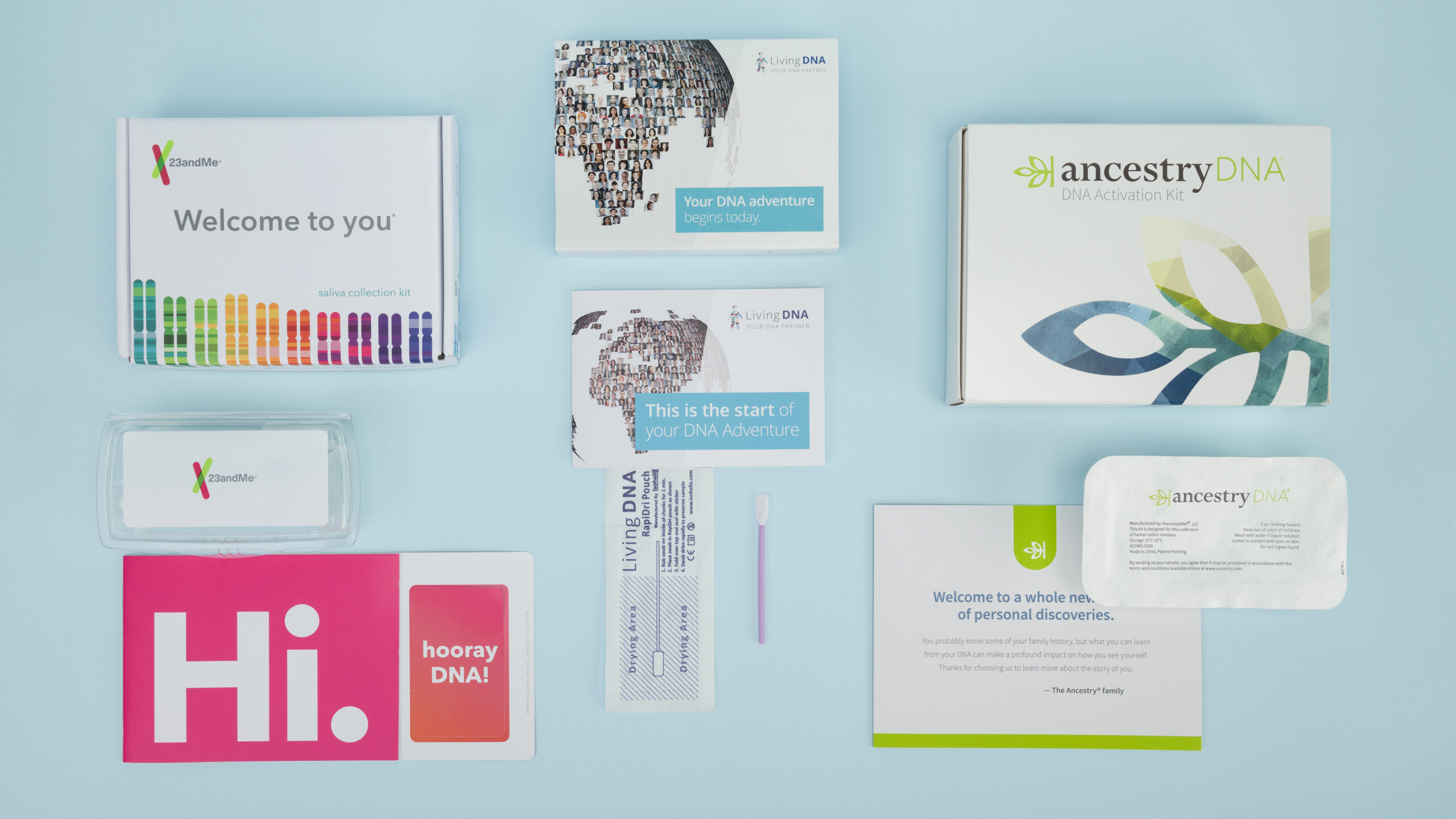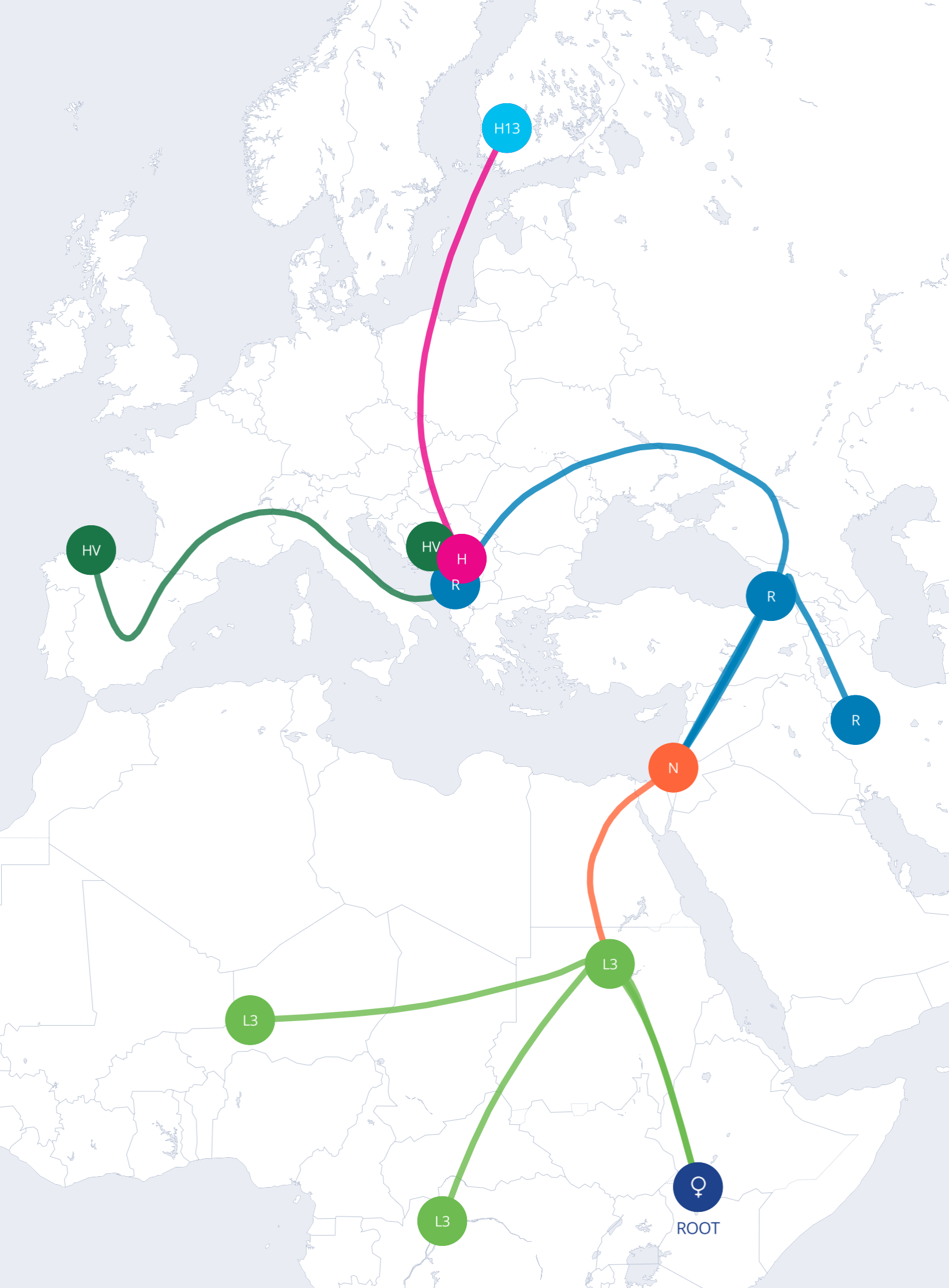
In This Article
In This Article
Long before GPS or paper maps, our ancestors left clues to their journeys inside their DNA. By reading those clues, scientists now sketch a clearer picture of how the first people reached the Americas—and why modern Indigenous communities are not simply “Asians who kept walking.” Let’s unpack that story in everyday language.
Know Your DNA Reviews

Don't miss out on the opportunity to learn more about yourself. Read our best DNA test page to find the best one for you.
Every cell in your body holds two kinds of family postcards:
Researchers track special spelling quirks in those postcards. Clumps of quirks travel together for generations, forming family branches that scientists label with letters and numbers (think of them as team jerseys). Finding the same jersey on different continents hints at a shared past.
Five maternal branches—labeled A, B, C, D, and X—show up in almost every Indigenous community from Alaska to Argentina. Each branch nests inside a bigger Asian “super-branch,” confirming that first-Americans once lived in Northeast Asia.
Paternal clues tell the same tale. Two father-line branches, called Q and C, dominate in the Americas and trace back to Siberia. Together, these maternal and paternal hints nail down an Asian starting point.
In 2014, geneticists sequenced DNA from a 24,000-year-old boy buried near Lake Baikal in Siberia. His genes linked Native Americans to Ancient North Eurasians—a West-leaning Eurasian group—adding a brand-new ingredient to the First American recipe. Modern East Asians lack this ingredient, helping explain why Indigenous Americans form their own separate cluster in DNA studies.
During the last Ice Age, so much water sat frozen in glaciers that sea levels dropped 100 meters. Up popped Beringia, a vast plain connecting Russia and Alaska. Climate data and DNA models suggest families lived there for 5,000 years or longer, hunting woolly mammoths and gathering tough grasses.
That long stopover mattered. Picture a tiny group of travelers snowed in at an airport for centuries. Inside that bubble, chance and adaptation tweak their DNA. By the time ice melted and paths opened south—around 16,000 years ago—these people carried a genetic fingerprint no longer identical to their Asian cousins.
| Common Myth | What DNA Shows |
| “Native Americans are just Asians who wandered farther east.” | They share ancient roots with Asians but became a distinct population after thousands of isolated years in Beringia plus a dose of Ancient North Eurasian ancestry. |
| “Many unrelated groups populated the Americas.” | All Indigenous peoples tested so far trace back to the same founding band that later split into regional branches. |
An easy way to picture the family tree is to imagine a three-trunk stump:
Once the ice sheets receded, these groups moved fast—reaching Chile in perhaps 2,000 years. Stone tools and campfires show up like breadcrumb trails along both the inland ice-free corridor and the Pacific coast, hinting at multiple routes.
“How can a single tooth or bone scrap reveal so much?” It comes down to ancient DNA (aDNA). Scientists grind a tiny piece of bone, fish out fragile genetic strands, and compare them to modern genomes. If the letters line up, they belong to the same family branch; if not, they open a new chapter. Discoveries like the Anzick-1 infant in Montana or the Baikal boy continually reshape migration maps.
Imagine two siblings who move to opposite sides of the globe, start new families, and never exchange genes again. After 15,000 years—or roughly 600 generations—their descendants will share deep roots but carry many unique quirks. That’s the relationship between Indigenous Americans and modern East Asians.
Enrollment in a tribe follows community-based rules, often relying on documented family lines, not genetic percentages. A DNA test may show you carry a few Indigenous markers, but it cannot grant cultural belonging. If you’re exploring family stories, pair your results with historical records and, when needed, a certified genetic counselor for context.
Understanding your family story is easier when you have clear, reader-friendly resources at hand. Start here:
These resources walk you through each step, from choosing a test to understanding the fine print.
Modern genetics paints a vivid but nuanced picture: yes, the first Americans left Asia, crossing a frigid grassland during the Ice Age. Yet millennia of isolation, a surprising Eurasian mix, and life on two vast continents forged peoples who are genetically—and culturally—distinct from anyone else on Earth. Their story reminds us that small bands can seed great diversity, and that DNA, while powerful, is only one thread in the rich tapestry of human identity.
Know Your DNA Reviews

Looking for a DNA test that's accurate and can tell you about your health and heritage?
